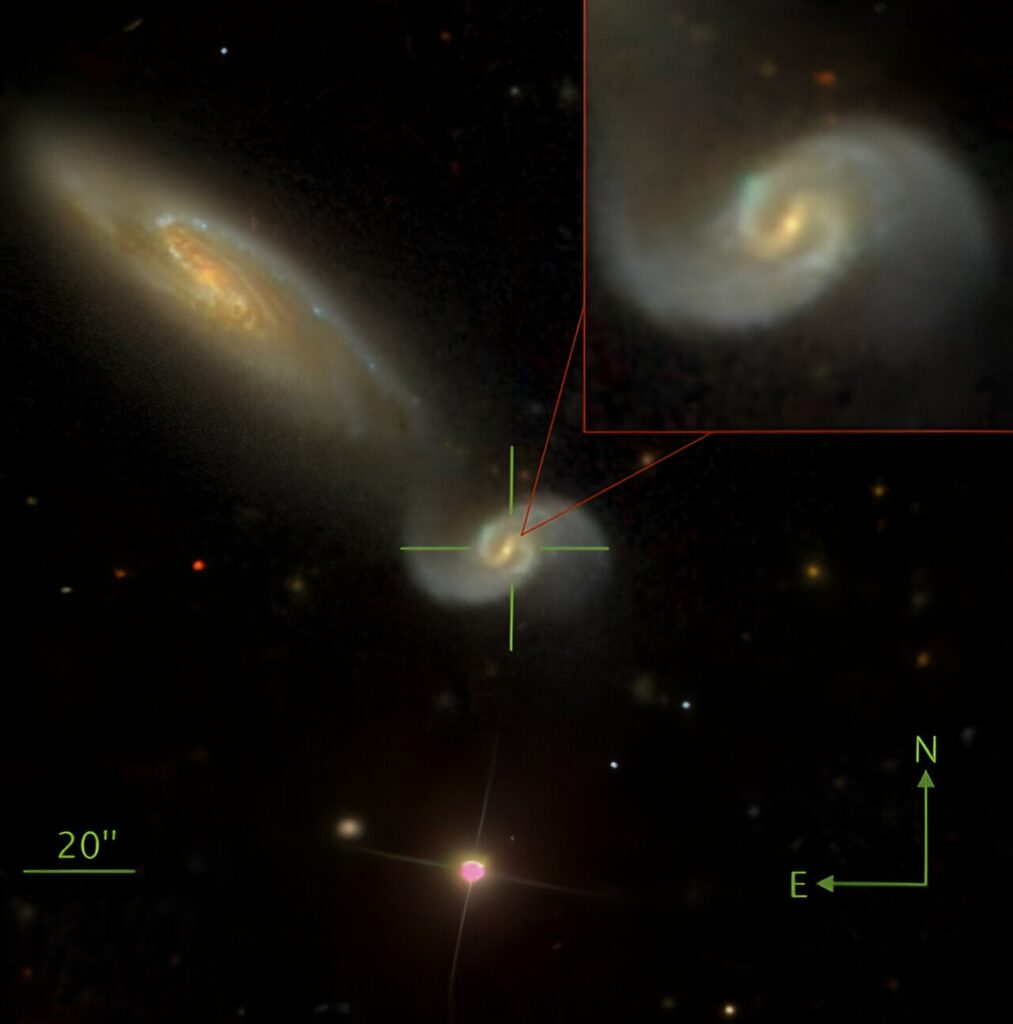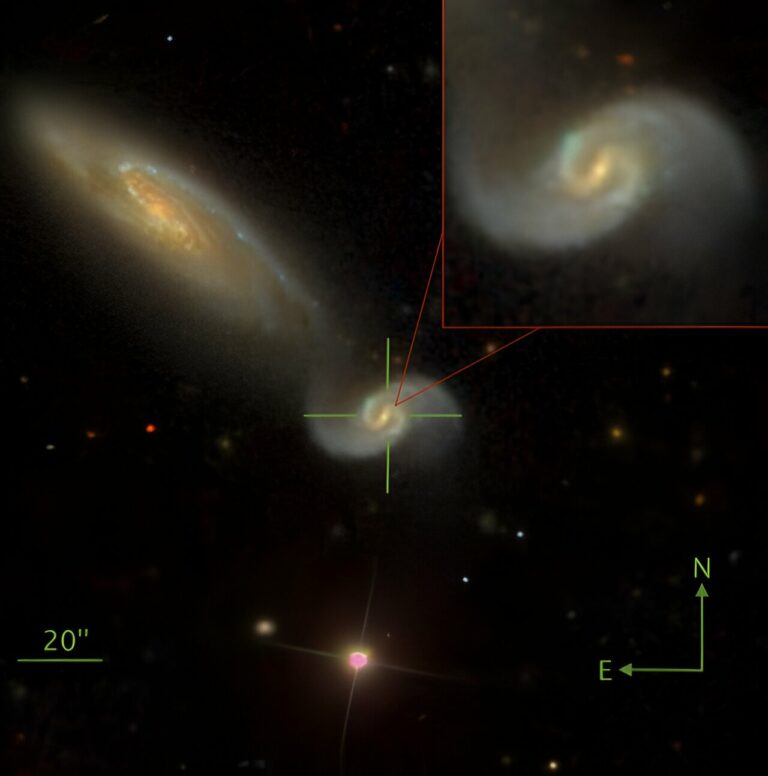New Observations Illuminate the Characteristics of the Closest Tidal Disruption Event.
AT 2023clx, the closest tidal disruption event (TDE) to Earth, has been the subject of multiwavelength observations by an international team of astronomers. The team’s findings, which were published on the pre-print server arXiv on Jan. 22, provide valuable insights into the characteristics of this TDE.
TDEs are celestial occurrences that take place when a star comes within close proximity to a supermassive black hole and is torn apart by the immense tidal forces exerted by the black hole. This process leads to the disruption of the star. The resulting debris from the disrupted star then falls onto the black hole, emitting radiation from its innermost region. This radiation serves as an indication of the presence of a TDE.
AT 2023clx is situated in the core of the NGC 3799 galaxy, approximately 155.8 million light years away from Earth. It is recognized as the nearest optical TDE known to us. Initially identified as a transient event in 2014, it was officially classified as a TDE in July 2023. With a maximum blackbody luminosity of only 4.56 tredecillion erg/s, AT 2023clx is among the least luminous tidal disruption events that have been documented.
Due to its recent discovery, very little is currently understood about the properties of AT 2023clx. Consequently, a team of astronomers, led by Panos Charalampopoulos from the University of Turku in Finland, conducted an extensive investigation of this TDE using optical, near-infrared, and ultraviolet observations. To accomplish this, they utilized a variety of space telescopes and ground-based observatories, including NASA’s Swift spacecraft and the Nordic Optical Telescope (NOT).

The researchers have presented a comprehensive analysis of AT 2023clx, including both photometric and spectroscopic observations. The data revealed that AT 2023clx had a peak absolute magnitude of −18.25 mag in the g-band and a maximum bolometric luminosity of 32.4 tredecillion erg/s, indicating it is an intermediate luminosity Tidal Disruption Event (TDE). The estimated mass of the supermassive black hole involved in this event is approximately 1 million solar masses.
The study also found that AT 2023clx reached its peak within a remarkably short period of 10.4 days, making it the fastest rising TDE known to date. The astronomers speculate that this rapid rise was caused by the disruption of a very low-mass star (below 0.1 solar masses) with an impact parameter of approximately 0.8.
Spectroscopic analysis revealed a cooling blue continuum and broad Balmer and helium lines, which are characteristic features observed in tidal disruption events. Over time, the lines gradually became narrower as their luminosity decreased, consistent with other known TDEs.
Furthermore, observations of AT 2023clx identified a distinct emission peak at a rest wavelength of approximately 6353 Å, located on the blue side of the broad hydrogen-alpha profile. This unique feature had not been previously observed in any other TDE.
In conclusion, the researchers emphasize that AT 2023clx resulted from the tidal disruption of a low-mass star with a small radius and low central concentration. Although it was close to complete disruption, it remained below the critical value. The researchers note that such a disruption should exhibit a sharper rise and a shallower decline in the light curves compared to other disruptions.
This article is republished from PhysORG under a Creative Commons license. Read the original article.
Do not forget to share your opinion with us to provide you with the best posts !




0 Comments